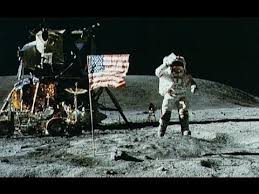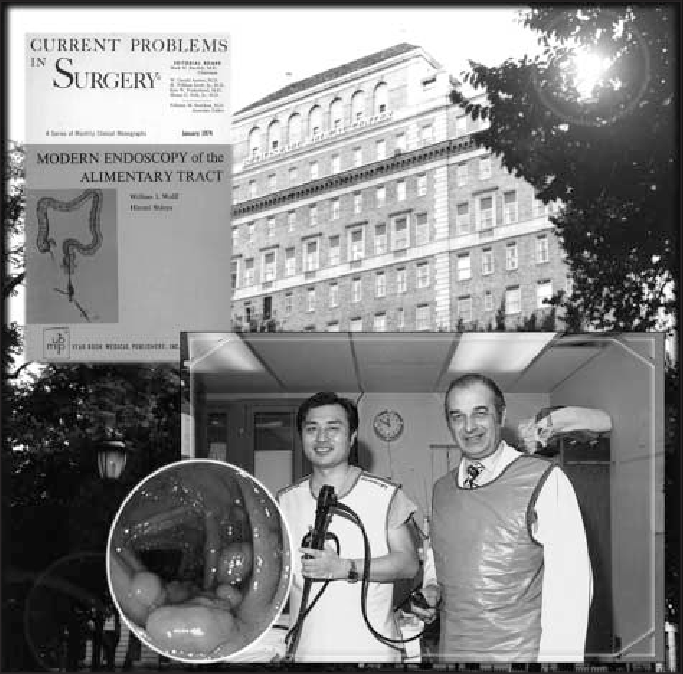ARTICLE SUMMARY:
The turbulent late 1960s were marked by Vietnam protests, Woodstock, and man’s first steps on the Moon. It was also the dawn of the era of colonoscopy, one of the most significant tools we have against colorectal cancer—the third most commonly diagnosed cancer and second leading cause of cancer death in the US.
Fifty years ago, on July 20, 1969, the world collectively held its breath as American astronauts Neil Armstrong and Edwin 'Buzz' Aldrin became the first two people to set foot on the Moon, during NASA’s Apollo 11 mission. The crew, which included Michael Collins, returned safely to Earth on July 24.
The following month, the first mega-concert, the Woodstock Music and Art Fair, was held in Bethel, New York. The three-day festival attracted an audience of more than 400,000 (see image below) to watch performances by 32 of the biggest bands of the day, including Joan Baez, Santana, Grateful Dead, Creedence Clearwater Revival, Janis Joplin with The Kozmic Blues Band, Sly & the Family Stone; The Who, Jefferson Airplane, Joe Cocker, The Band, Blood, Sweat & Tears, Crosby, Stills, Nash & Young, and Jimi Hendrix. (Fun facts: The original concert site is now home to the Bethel Woods Center for the Arts. Also, Peanuts comic strip creator, Charles M. Schulz, named Snoopy’s feathered friend after the event.) This last year of the turbulent 1960s was also marked by Vietnam War protests and the first withdrawal of US troops from the region, Wal-Mart was incorporated, and the first automatic teller machine was installed in the US.
In June of 1969, history was also made in detecting colorectal cancer—one of the most prevalent and preventable cancers. Hiromi Shinya, MD, a Japanese-born general surgeon, and William Wolff, MD, a cardiothoracic surgeon, working together at New York’s Beth Israel Medical Center performed one of the first colonoscopies. At that time, Wolff and Shinya had performed over 1,000 endoscopic procedures to examine the stomach and esophagus. They said that it was a "logical extension" to use a similar, but specially-built, flexible fiberoptic instrument to study the full length of the colon from the other end of the gastrointestinal tract.
Between June 1969 and June 1972, the two performed more than 1,600 diagnostic procedures using a colonoscope "without morbidity or mortality,” according to their landmark New England Journal of Medicine paper, published in February 1973. One of their most significant advances was a wire loop snare-cautery device designed by Shinya, working with Olympus Optical Co., which enabled the immediate removal of polyps—eliminating the need for a second procedure. (At that time, polyps were thought to be benign growths, but they are now known to be the origin of virtually all colonic malignancies.) This was a groundbreaking advance in the early detection and treatment of colorectal cancer, and Wolff and Shinya’s protocol became the universal standard. At the time, Francis Moore, MD, a leading surgeon-scientist, called it “a quantum advance in abdominal surgery.”
Colonoscopy expanded through the 1970s, and gained wide public exposure when the procedure was used to remove polyps from President Ronald Reagan in the mid-1980s.
Prior to Wolff and Shinya’s innovations in this space, many medical pioneers over the past 200+ years helped shape our understanding of the disease processes affecting the digestive system. In the early 19th century, for example, the use of gas lamps and candles with reflectors by Phillip Bozzini of Frankfurt, Germany, Pierre Segalas of Paris, France, Francis Cruise of Dublin, Ireland, and John Fisher of Boston, MA, allowed for some observation of the upper and lower gastrointestinal tract. Further study and product development by physicians, engineers, optical instrument makers, and others over the years led to the emergence and refinement of systems including light sources, optical devices, and flexible endoscopes to safely and effectively peer inside the body.
Today, colonoscopy is at the heart of gastroenterology. More than 1.6 million colonoscopies are performed in the US annually. The decreasing incidence and associated mortality of colon cancer is primarily attributed to the value of screening, with colonoscopy considered the gold standard. In 2018 in the US, more than 136,000 people were diagnosed with, and more than 50,000 died from, colorectal cancer, according to the National Cancer Institute. It is the third most common cancer and second leading cause of cancer death in the US.
Several significant colonoscopy advances have occurred in recent years, including the industry-standard use of high-definition endoscopes to improve and widen the visual field, more flexible endoscopes that are easier to manipulate, and endoscopic light filtering technology including narrow band imaging (developed by Olympus) to better visualize early high-risk lesions and discriminate the borders of polyps from normal tissue. A significant issue still to be addressed: getting patients to have the procedure done.
For more information on recent advances in this field, see the MedTech Strategist archive.
#colonoscopy #GI #gastrointestinal #gastroenterology #abdominal #colorectalcancer #coloncancer #cancer #polyp #endoscope #Vietnam #Woodstock #NeilArmstrong #BuzzAldrin #MichaelCollins #CharlesSchultz #WilliamWolff #HiromiShinya #FrancisMoore #BethIsraelMedicalCenter #Olympus #RonaldReagan #PhillipBozzini #PierreSegalas #FrancisCruise #JohnFisher #NationalCancerInstitute #ThisWeekinMedtechHistory #InMedTechHistory #IMH #medicaldevice #medtech #CommunityBlog #MedTechStrategist #tracyschaaf
![]() Trial MyStrategist.com and unlock 7-days of exclusive subscriber-only access to the medical device industry's most trusted strategic publications: MedTech Strategist & Market Pathways. For more information on our demographics and current readership click here.
Trial MyStrategist.com and unlock 7-days of exclusive subscriber-only access to the medical device industry's most trusted strategic publications: MedTech Strategist & Market Pathways. For more information on our demographics and current readership click here.
